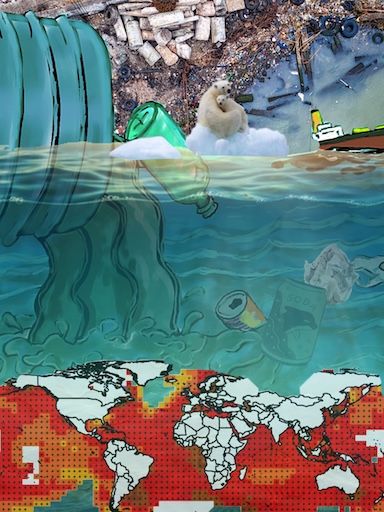
Changes in the Ocean.
Climate change warms the ocean,
causing knock-on effects such as thermal expansion -
which leads to a rise in sea level - and changes in
ocean currents. The melting of ice both on land and
in the sea also affects the ocean, causing more
sea-level rise and reducing the salinity of the
ocean, respectively. Greater concentrations
of carbon dioxide in the atmosphere also
mean that more of it dissolves in the ocean, leading
to acidification.
Each of these changes affect marine wildlife. Warming ocean temperatures can lead to coral bleaching - the sudden die-off of large parts of coral reefs - as well as cause animals such as fish to seek cooler waters, shifting their habitats north. This can have a knock-on impact on human communities that rely on those fish for food.
Each of these changes affect marine wildlife. Warming ocean temperatures can lead to coral bleaching - the sudden die-off of large parts of coral reefs - as well as cause animals such as fish to seek cooler waters, shifting their habitats north. This can have a knock-on impact on human communities that rely on those fish for food.
a